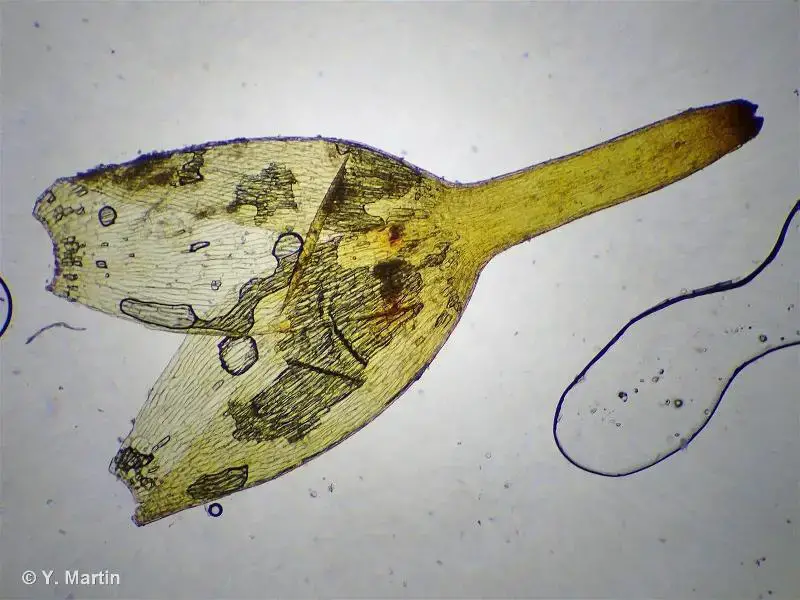
Taxiphyllum-giraldii-MuellHal-MFleisch-A-Habit-B-Pseudoparaphyllia-C-D-Stem_Q640.jpg from: https://www.researchgate.net/figure/Taxiphyllum-giraldii-MuellHal-MFleisch-A-Habit-B-Pseudoparaphyllia-C-D-Stem_fig5_354916178
Exploring the Fascinating World of Pterobryopsis crassicaulis Moss
Introduction

381956.jpg from: https://inpn.mnhn.fr/espece/cd_nom/5642/tab/taxo
Mosses may be small, but they play a big role in many ecosystems around the world. One particularly interesting species is Pterobryopsis crassicaulis (Müll.Hal.) M.Fleisch., a moss in the Pterobryaceae family. In this blog post, we’ll take a closer look at this fascinating plant, from its unique morphology to its global distribution and ecological importance. Get ready to dive into the miniature world of Pterobryopsis!
Background
Mosses are non-vascular plants in the division Bryophyta. Unlike other land plants, they lack true roots, stems, and leaves. Instead, they have leaf-like structures called phyllids that absorb water and nutrients. Mosses reproduce via spores rather than seeds and are found in a wide range of habitats, from arctic tundra to tropical rainforests.
Morphology and Identification

moss.jpg from: https://www.gardeningknowhow.com/ornamental/foliage/moss/propagating-moss.htm
Pterobryopsis crassicaulis is a pleurocarpous moss, meaning its sporophytes (spore-producing structures) grow laterally from the stem. Its phyllids are ovate-lanceolate in shape and have a distinctly thickened costa (midrib). The stems are creeping to ascending and irregularly branched. Capsules are erect and cylindrical on short setae.
One of the key identifying features of P. crassicaulis is the numerous paraphyllia (small, leaf-like appendages) that cover the stems. These give the moss a “hairy” or “fuzzy” appearance. The calyptra (hood covering the capsule) is mitrate and hairy.

medium.jpeg from: https://enciclovida.mx/especies/136960-pterobryopsis
Global Distribution and Habitat

How-To-Grow-Moss.jpg from: https://aquariumviews.blogspot.com/2020/06/how-to-grow-moss-on-rocks-in-aquarium.html
Pterobryopsis crassicaulis has a wide distribution, found in tropical and subtropical regions of Asia, Africa, Australia, and the Pacific Islands. It typically grows on tree trunks and branches in moist, shady forests at low to middle elevations (up to about 2000 m). The species is epiphytic, meaning it uses trees and other plants for support but is not parasitic.
Some countries/regions where P. crassicaulis has been documented include:
- China
- India
- Indonesia
- Malaysia
- Philippines
- Papua New Guinea
- Queensland, Australia
- Fiji
- Samoa
- Vanuatu
Ecological Roles and Adaptations
Like other epiphytic mosses, Pterobryopsis crassicaulis plays several important roles in forest ecosystems:
Moisture retention
00ae422930c03355c1279e7d3670b688.jpg from: https://taieol.tw/muse/digi_object/5c288503a07b98ea98b8f1ea8f885b55

591.jpg from: https://indiabiodiversity.org/species/show/281182
: The dense mats formed by the moss help trap and retain moisture, regulating humidity in the microclimate around the host tree.

moss_2.jpg from: https://mibellebiochemistry.com/8-surprising-facts-about-moss
Nutrient cycling: Mosses absorb nutrients from rainwater and detritus, making them available to other organisms in the ecosystem.
Habitat provision: The mats of moss provide shelter and nesting material for various invertebrates and some small vertebrates.
Substrate stabilization: By covering branches and trunks, the moss helps protect the bark from damage and erosion.
P. crassicaulis has several adaptations that allow it to thrive as an epiphyte:
- Numerous rhizoids for attachment to bark
- Ability to absorb water and nutrients over the entire surface of the phyllids
- Tolerance of periodic drying out between rain events
- Asexual reproduction via fragmentation, allowing efficient local dispersal
Conclusion
From its fuzzy stems to its rainforest habitat, Pterobryopsis crassicaulis is a prime example of the incredible diversity and adaptability of mosses. The next time you’re walking through a tropical forest, take a moment to appreciate the miniature world of epiphytes that thrives above your head!
What other secrets do you think these tiny plants hold? The more we study mosses like P. crassicaulis, the more we realize how much there is still to discover about their ecology and importance in ecosystems worldwide.